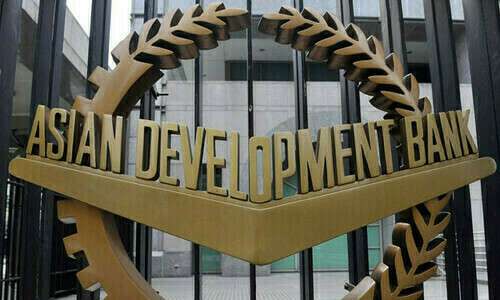The Asian Development Bank (ADB) has revised Pakistan’s economic forecast for fiscal year 2025 (FY25) to 3 percent, providing a cautiously optimistic outlook. In its latest Asian Development Outlook (ADO) report, the ADB highlighted several factors contributing to this upward revision. These factors include improved macroeconomic stability following the approval of a new International Monetary Fund (IMF) program and a rebound in industrial output, which is expected to be supported by an improved investment climate and access to foreign exchange. However, challenges persist, particularly in the agricultural sector due to adverse weather conditions.
This article explores the details of the ADB’s updated forecast for Pakistan’s economic performance in FY25, the factors driving the growth outlook, and the ongoing challenges that may affect the country’s recovery.
Revised Growth Outlook: 3 Percent for FY25
Positive Factors Contributing to Economic Growth
The ADB’s revision of Pakistan’s growth forecast for FY25 to 3 percent from the earlier 2.8 percent shows a modest improvement. This revision is largely driven by the approval of a $7 billion Extended Fund Facility by the IMF in September 2023, which is expected to provide macroeconomic stability and support recovery. According to the ADB, several key factors are expected to drive economic growth in the coming year:
- Macroeconomic Stability: The IMF’s program is expected to provide a foundation for improved economic stability, encouraging domestic and foreign investments.
- Industrial Output Recovery: The suspension of import management measures, higher investor confidence, and easier access to foreign exchange are expected to drive industrial output growth. This recovery could help stimulate other sectors of the economy as well.
- Accommodative Monetary Policy: Due to the decline in inflationary pressure, the ADB anticipates a more accommodative monetary policy in Pakistan. This will likely create a favorable environment for economic activity, boosting consumption and investment.
Challenges: Agriculture and Inflationary Pressures
Agriculture Growth Expected to Weaken
Despite the positive forecast for industrial growth, the agriculture sector faces challenges that could dampen overall growth. The ADB highlighted that heavy monsoon rains in July–September 2024 and subsequent floods in parts of Pakistan are expected to impact agricultural productivity. Major crops like wheat and cotton are projected to perform poorly, which will likely put pressure on rural incomes and food security. The agricultural sector, which is a significant contributor to the economy, will likely see slower growth in FY25 due to these adverse conditions.
Inflation Outlook: Revision Downwards
In a positive development, the ADB has revised its inflation forecast downwards for FY25. The inflation rate, which was initially projected to be 15 percent, is now expected to be around 10 percent. This revision follows a decline in inflation to single digits in August 2024, which was attributed to several factors:
- Base Effect: A high base effect from the previous year has contributed to the decline in inflation.
- Contained Demand-Side Pressures: Demand-side inflation pressures have been contained, which has eased some of the upward pressure on prices.
- Improved Supply of Major Food Items: A more favorable global commodity market and improved supply of major food items have also played a role in moderating inflation.
Regional Outlook: Mixed Performance in South Asia
Revised Growth Projections for South Asia
The ADB’s regional outlook for South Asia has been revised downward, primarily due to slower-than-expected growth in some countries in the region. While Pakistan’s economic outlook has improved, other economies like Bangladesh and the Maldives have faced challenges that have affected their growth projections.
In particular, the political unrest in Bangladesh during July-August 2024 and the fiscal consolidation measures in the Maldives have negatively impacted their economic outlooks. As a result, growth forecasts for these two countries have been revised downward, with Bangladesh facing the most significant impact.
Despite these setbacks, Sri Lanka’s outlook has improved, and the ADB revised its growth projections upwards for the country due to signs of recovery.
ADB Approves Additional Financing for Pakistan’s Social Protection Programs
In a separate development, the ADB approved an additional $330 million in financing to support Pakistan’s social protection programs. This financing will be used to strengthen the country’s social protection infrastructure and help alleviate poverty, particularly among vulnerable populations like women and children.
Key Focus Areas of the ISPDP Program
The additional financing will go towards expanding the Integrated Social Protection Development Program (ISPDP), which aims to:
- Improve Institutional Capacity: Strengthen the Benazir Income Support Program (BISP) to transition to a more adaptive and climate-resilient social protection system.
- Increase Access to Education and Health Services: Enhance access to education pathways for children and youth from low-income families and improve health services and nutrition for disaster-prone areas.
- Support Vulnerable Women and Families: Target poverty alleviation initiatives aimed at improving the livelihood and welfare of women, who are often disproportionately affected during economic downturns.
ADB’s director general for Central and West Asia, Yevgeniy Zhukov, emphasized the importance of these programs in reducing intergenerational poverty and improving human capital development.
Global Economic Outlook: Impact of US Policy Changes
The ADB’s report also explored the potential impact of US policy changes on Asia and the Pacific, particularly under President-elect Trump. While the full effects of these policy changes are not expected to materialize until 2026, the ADB noted that trade, fiscal, and immigration policy shifts could have significant consequences for economic growth in the region.
For countries in Asia, including China, the impact of tariff hikes and changes in trade policies could result in slower growth and increased inflation. These changes, if implemented sooner than expected, could impact export-oriented economies and disrupt supply chains.
However, the ADB suggested that the effects on developing Asia would be limited under this high-risk scenario, and the region’s overall growth would continue to be supported by strong domestic demand and export expansion.
FAQs: ADB’s Revised Economic Outlook for Pakistan
1. What is the revised economic growth forecast for Pakistan in FY25?
The Asian Development Bank (ADB) has revised Pakistan’s economic growth forecast for FY25 to 3 percent, up from an earlier projection of 2.8 percent.
2. Why has Pakistan’s economic growth forecast been revised upwards?
The upward revision is largely due to macroeconomic stability following the approval of the IMF’s $7 billion Extended Fund Facility, along with a recovery in industrial output and improved investor confidence.
3. What factors are expected to contribute to economic growth in FY25?
Factors contributing to growth include improved macroeconomic stability, a recovery in industrial output, and a more accommodative monetary policy due to easing inflation.
4. How will agriculture impact Pakistan’s economic performance in FY25?
Agricultural growth is expected to weaken in FY25 due to heavy monsoon rains and floods, which are projected to reduce yields of major crops like wheat and cotton.
5. How has the ADB’s forecast for inflation in Pakistan changed?
The ADB revised its inflation forecast downwards to 10 percent for FY25, from an earlier estimate of 15 percent, due to the easing of inflationary pressures and improved food supplies.
Conclusion
While Pakistan faces significant challenges, particularly in agriculture, the revised growth outlook for FY25 by the ADB offers hope for recovery. The approval of the IMF program, along with improvements in industrial output and inflation management, provides a foundation for growth in the coming year. However, the country must navigate the effects of adverse weather conditions on agriculture and other risks in the global economy to maintain positive momentum
ALSO READ
https://flarenews.pk/2024/12/11/father-and-stepmother-convicted-of-sara-sharifs-murder/



